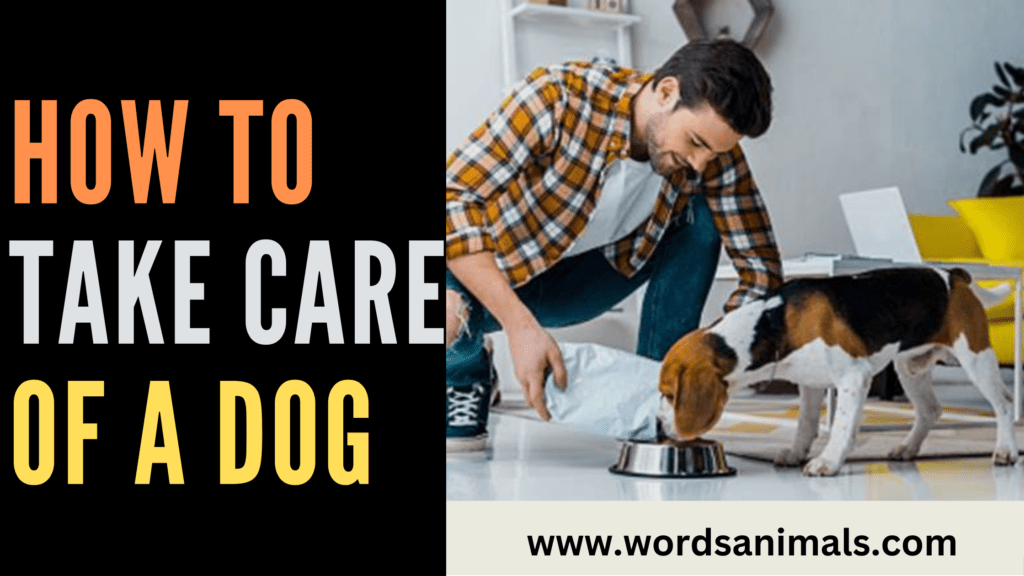Dogs live happily in summer, spring and other seasons. But you much know that how to take care of a dog in winter. It’s very difficult to keep warm in winter to dogs when they are outside. There are some key points that will help to take care of dogs.
Feeding:
Feeding your dog a well-balanced diet is an essential part of taking care of your furry friend.
Choose high-quality dog food:
Look for dog food that is made from high-quality ingredients, including real meat, vegetables, and grains. Avoid dog food that contains artificial colors, flavors, or preservatives.
Determine the appropriate amount of food:
The amount of food your dog needs depends on factors such as their breed, age, activity level, and weight. Your veterinarian can provide guidance on how much food your dog should be eating.
Establish a feeding schedule:
Dogs thrive on routine, so it’s important to establish a regular feeding schedule. Depending on your dog’s age and activity level, they may need to be fed once or twice a day.
Avoid table scraps:
While it may be tempting to give your dog table scraps, human food is not always appropriate for dogs and can be harmful to their health. Stick to feeding your dog dog food and treats specifically made for them.
Provide plenty of water:
Ensure your dog has access to clean, fresh water at all times.
Monitor your dog’s weight:
Regularly monitor your dog’s weight and adjust their food intake as necessary. An overweight dog is at risk for health problems such as diabetes, heart disease, and joint issues.
Avoid feeding your dog toxic foods:
Some human foods can be toxic to dogs, including chocolate, grapes, onions, garlic, and avocado.
Remember to consult with your veterinarian if you have any questions or concerns about your dog’s diet or feeding routine.
Grooming:
Regular grooming is an important aspect of taking care of your dog’s health and well-being.
Brushing:
Regular brushing helps remove loose hair and prevents matting. The frequency of brushing depends on your dog’s coat type. Dogs with longer hair may require daily brushing, while dogs with short hair may only need to be brushed once or twice a week.
Bathing:
How often you should bathe your dog depends on their activity level and coat type. Most dogs only need to be bathed once a month or less frequently.
Nail trimming:
Keep your dog’s nails trimmed to prevent them from getting too long and causing discomfort or difficulty walking. Clip the nails just below the quick (the pink area visible inside the nail).
Cleaning ears:
Check your dog’s ears regularly for signs of infection or debris. Use a damp cloth or a dog-specific ear cleaner to clean the outer ear.
Brushing teeth:
Regular brushing helps prevent dental problems such as tartar buildup and gum disease.
Haircuts:
Depending on your dog’s coat type, they may need a haircut to keep their hair at a manageable length. Some breeds require professional grooming, while others can be groomed at home.
Remember:
To reward your dog with treats and praise during grooming sessions to make it a positive experience for them. If you are unsure about how to groom your dog, consider consulting with a professional groomer or your veterinarian for guidance.
Provide plenty of water:
Providing plenty of water is crucial for your dog’s health and well-being. Here are some tips to ensure your dog has access to enough water.
Always provide fresh water:
Make sure your dog has access to clean, fresh water at all times. Change the water daily, and more frequently in hot weather or if your dog drinks a lot.
Choose a suitable water bowl:
Use a bowl that is the right size for your dog and that is sturdy and easy to clean. Ceramic, stainless steel, and plastic bowls are all suitable options.
Consider a water fountain:
Some dogs prefer drinking from running water, and a water fountain can encourage them to drink more. A fountain also helps keep the water fresh and oxygenated.
Bring water on the go:
When taking your dog on outings, bring water with you to ensure they stay hydrated. Collapsible water bowls and portable water bottles with a built-in dispenser are convenient options.
Remember:
Water is essential for your dog’s body to function properly, so make sure they always have access to plenty of fresh, clean water. If you have any concerns about your dog’s water intake or behavior, consult with your veterinarian.
Avoid feeding your dog toxic foods:
Chocolate:
Chocolate contains theobromine, which can be toxic to dogs and cause vomiting, diarrhea, rapid heart rate, and even seizures or death.
Bones:
Cooked bones can splinter and cause serious digestive issues, as well as choking or intestinal blockages.
Xylitol:
This sweetener is commonly found in sugar-free gum and other products and can cause a rapid insulin release in dogs, leading to hypoglycemia, seizures, and liver failure.
Conclusion:
How to take care of a dog requires attention to several key areas, including feeding, grooming, providing plenty of water, and avoiding toxic foods. By following these tips and consulting with your veterinarian as needed, you can help ensure your dog stays healthy and happy. Additionally, providing your dog with plenty of love and attention, exercise, and mental stimulation are also important factors in their overall well-being. With proper care and attention, you can develop a strong and loving bond with your furry companion that will last a lifetime.how to take care of a dog
FAQs:
How to take care of dogs?
Provide the best food, water and milk to your dogs. Don’t use toxic food for your dogs.
Define basic needs for dogs
There are four basic needs for dogs, water, food, safe place to sleep and exercise.
How can I train my dog?
If you want to train your dog for specific behavior, provide it treats and specific affection.



